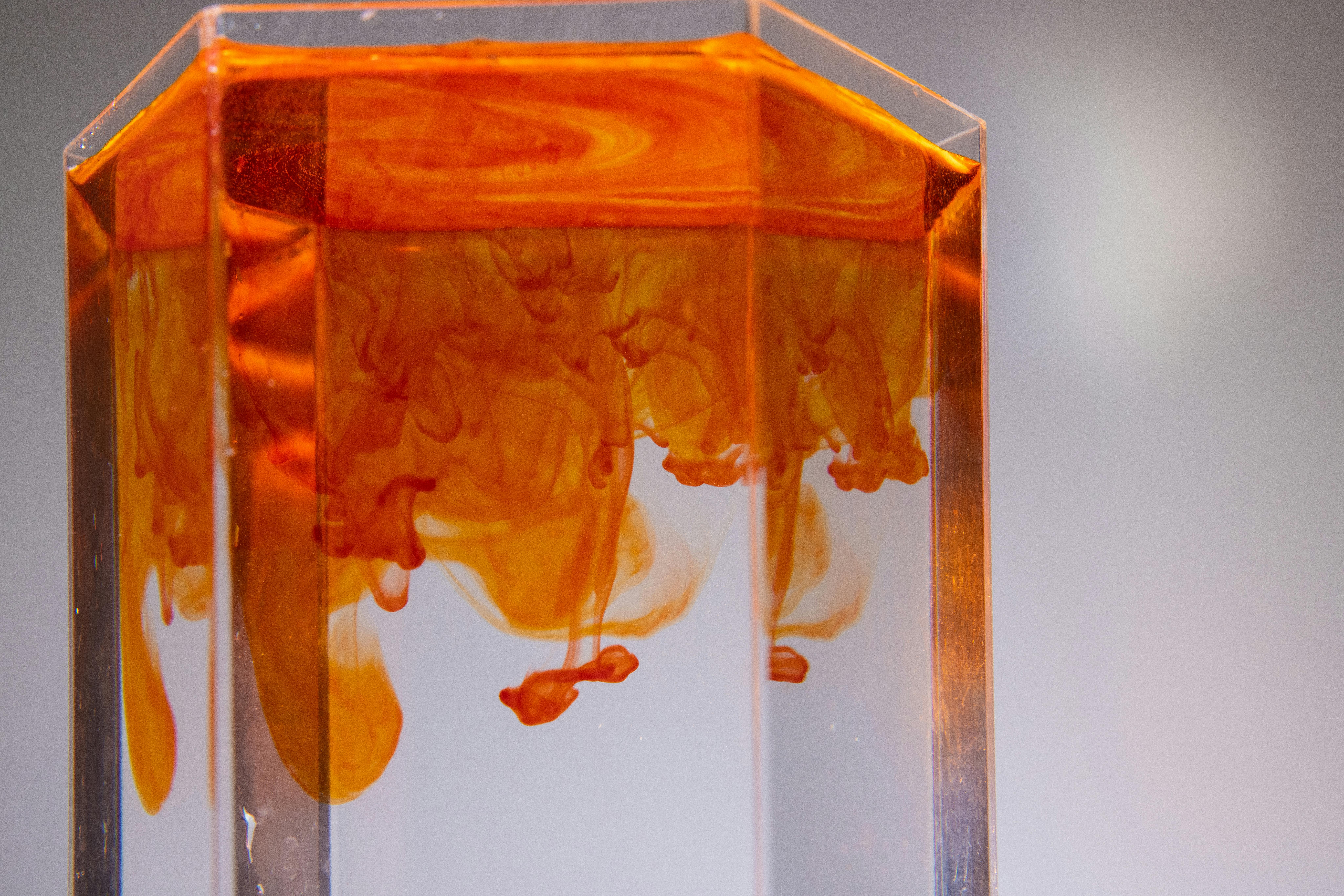Applying a water based stain is a great way to protect wood surfaces and enhance the natural grain of the wood. Water based stains are easy to apply and clean up, and they come in a variety of colors that you can customize to your own taste. The following steps will help you apply water based stain evenly and accurately.Before applying water based stain to any project, there are several important things to consider. First, make sure the surface you are staining is clean and free from dust and debris. It is also important to properly prepare the surface before staining, by sanding it smooth and then cleaning it with a damp cloth. Next, make sure you have all of the necessary supplies handy before beginning the staining process. This includes a quality brush or foam applicator, a high-quality water based stain, as well as a few rags for wiping off excess stain or cleaning up spills. Additionally, you will need some kind of protective gear like gloves and safety glasses to protect your skin and eyes while working with the stain. Finally, be sure to read all instructions on the product label before applying the stain so that you can use it properly and according to manufacturer’s directions.
Choosing the Right Water Based Stain
When it comes to wood staining, there are many options available. One of the most popular choices is water based stain. This type of stain provides a beautiful, natural finish that is easy to apply and maintain. It can also be used on a variety of different types of wood, including softwoods, hardwoods, and even plywood. To help you choose the best water based stain for your project, here are some tips to keep in mind.
The first thing to consider when selecting a water based stain is the type of wood you are working with. Softwoods are more prone to absorbing stains than hardwoods, so they may require multiple coats of stain in order to achieve the desired color and finish. Hardwoods on the other hand may require less coats but can still produce beautiful results with just one or two applications. Be sure to read the instructions on the product label carefully before applying any type of water based stain product.
The next thing to consider is how much time you have available for staining your project. Water based stains tend to dry quickly so they can be completed in a relatively short amount of time compared to other types of stains. However, this also means that it’s important not to rush through the process as mistakes can easily be made if you try and rush through it. Take your time and make sure that each coat is properly applied and allowed enough time to dry before adding another coat if necessary.
Finally, be sure to select a quality water based stain that will provide long lasting results. Quality products will offer superior coverage and protection for your wood surfaces as well as a beautiful finish that will look great for years to come. When selecting your stain, take into consideration both budget and performance so you get the best value for your money while still achieving beautiful results on your next project.
Prepping the Surface for Water Based Stain
Preparing the surface before applying a water based stain is important to ensure that the finished product looks great and lasts. The first step is to make sure the surface is clean and free of any dirt, dust, or debris. Use a vacuum cleaner to remove any loose particles and then wipe down the area with a damp cloth. Once the surface is clean, you can begin sanding. Start with a medium grit sandpaper and work your way up to a finer grit for a smooth finish. You may also want to use an electric sander if available. Once you have finished sanding, use tack cloths or a damp rag to remove any remaining dust from the surface.
After the surface has been prepped, it is important to apply a wood sealer before staining. This will help protect your wood from future damage and discoloration from water-based stains. A quality sealer can be applied with either a brush or roller, depending on the size of your project. Allow ample time for the sealer to dry before applying your stain. This will ensure that it bonds properly and will not be affected by moisture during application.
Once you have prepped the surface and applied your sealer, you are ready to apply your water-based stain! It is important that you follow all manufacturer’s instructions when applying any type of stain, but especially with water-based stains as they can be tricky to work with at times. Make sure you are using adequate ventilation while working with these products as they can emit hazardous fumes when used improperly
Applying Water Based Stain to Unfinished Wood
Applying water based stain to unfinished wood is a great way to bring out the natural beauty of the wood and make it look more attractive. It’s also a great way to add color and texture to your project. The key to success when applying water based stain is to do it properly, in order for the stain to look its best. Here are some tips for applying water based stain to unfinished wood:
First, make sure you prepare the wood properly before you start staining. Sand the wood with a fine-grit sandpaper until it is smooth, then wipe away any debris or dust with a damp cloth. This will ensure that the stain adheres properly and that you get an even finish.
Next, mix your water based stain according to the manufacturer’s instructions. Make sure that all of the ingredients are thoroughly blended together before you begin staining. It’s also important to use a clean brush or rag when applying the stain so that it will not be contaminated with dirt or dust.
Once you’ve mixed up your stain, apply it liberally to your unfinished wood surface using a brush or rag depending on what type of finish you’re looking for. Work in small areas at a time and use long sweeping strokes in one direction only. Allow the first coat of stain to dry completely before applying additional coats as necessary.
Finally, after all of your coats of water based stain have dried completely, you can seal them with a clear finish such as varnish or polyurethane. This will protect your stained wood from moisture damage and help keep its beautiful color for years to come. Just make sure that whatever sealant you use is compatible with your chosen water based stain so that it adheres properly.
By following these simple steps, applying water based stain to unfinished wood can be an easy and rewarding task that yields beautiful results!
Gather Materials
Before you apply a water-based wood stain, you will need to gather the necessary materials. This includes a clean cloth, a quality brush, and the right water-based wood stain for your project. You will also need to make sure that the surface of the wood is clean and free of dirt and dust. It is also a good idea to wear protective gloves while working with these materials.
Prepare the Wood
Once you have gathered all the necessary materials, it is important to prepare the wood for staining. This includes sanding down any rough spots or areas with imperfections. Use fine-grit sandpaper to ensure that the surface is smooth before applying any stain. Wipe off any dust or debris from sanding with a damp cloth before proceeding.
Apply Stain Evenly
Using a quality brush, apply an even coat of water-based wood stain to the entire surface of the wood. Work in small sections at a time and be sure to brush in only one direction so as not to create streaks or lines in the finish. Make sure that all areas are covered and there are no missed spots before moving on.
Allow Stain to Dry
Once you have applied an even coat of water-based wood stain, allow it to dry completely before proceeding. This can take several hours depending on how thickly it was applied and how much sunlight or heat is present in the area. Make sure that there are no wet spots before moving on.
Apply Second Coat
If desired, you can apply a second coat of water-based wood stain for added protection and color saturation. Allow this coat to dry completely before proceeding further with your project. Be sure that all areas are properly covered with each application.
Clean Up Materials
Finally, once your project is complete, it is important to clean up any materials that were used during application. This includes brushes, cloths, rags, and containers used for storing leftover stains or varnishes. Make sure everything is properly disposed of after use so as not to create any messes or hazards.

Applying a Coat of Clear Finish After Staining with Water Based Stain
Staining with a water based stain is a great way to add color and highlights to your woodworking projects. Once you have applied the stain, it is important to protect the finish by applying a coat of clear finish. This will keep the wood looking great for years to come. Applying a coat of clear finish after staining with a water based stain is relatively easy and can be done in just a few simple steps.
First, you will need to make sure that the stained surface is completely dry before applying the clear finish. If there is any wetness or dampness on the surface, it could cause the finish to not adhere properly or could lead to an uneven coat of finish. Allow the stained surface to dry thoroughly before proceeding.
Once the surface is dry, you can begin applying the clear finish. You may use either an oil-based or water-based product, depending on your preference and what works best for your project. Start by stirring or shaking the container of clear finish in order to mix any settled particles that have collected at the bottom. For oil-based products, you may also need to thin them down with mineral spirits if they are too thick for application.
Now, apply an even coat of clear finish over the stained surface using either a brush or cloth. Make sure that you are working in even strokes and covering all areas evenly as you go. Once you are finished with one coat, allow it to dry completely before applying additional coats if desired. Depending on how much protection and shine you want from your finished product, you may want to apply multiple coats of clear finish until desired results are achieved.
Finally, when all coats have been applied and have dried completely, inspect your work for any imperfections that need touched up or areas that need more coats of clear finish added for better coverage and protection. Once everything looks perfect and uniform in color and sheen, your project is complete!
Cleaning Up After Applying Water Based Stain
Cleaning up after applying a water based stain is an important part of the staining process. If done correctly, it can help ensure that the surface is clean, smooth and free from any residue or smudges. Here are a few tips to help you get started:
• Make sure to wear protective gear such as gloves and safety glasses when cleaning up after applying a water based stain. This will help to protect your skin and eyes from any residue or splashes that may happen during the process.
• Start by wiping down the surface with a damp cloth or sponge soaked in warm water. This will help to remove any excess stain that may have been left behind during application.
• Once you have wiped down the surface, use a clean cloth or sponge with a mild detergent to gently scrub away any remaining residue or smudges. Make sure to go over all areas of the surface thoroughly so that no areas are missed.
• Once you have finished scrubbing, rinse off the surface with clean water and allow it to dry completely before applying a protective topcoat or sealer. This will help to ensure that all traces of the stain have been removed and that no permanent damage has been done to the wood’s surface.
Following these tips can help make sure that your wood surfaces are clean and free from any residue after applying a water based stain. Taking the extra time to properly clean up can also help ensure that your woodwork looks its best for years to come!
Troubleshooting Common Problems When Applying Water Based Stain
Applying a water-based stain to your woodworking project can be a tricky process, but with the right preparation and knowledge, you can avoid common mistakes that can ruin your finished product. Before applying your stain, make sure the surface is clean and free of dirt and debris. Sand any rough patches before staining to ensure an even finish. Once the surface is ready, it’s time to apply the stain. Here are some troubleshooting tips for common issues when staining with a water-based product:
Uneven Coverage
If you are experiencing uneven coverage while staining, it might be due to improper application technique or inadequate stirring of the stain prior to application. It’s important to stir the stain thoroughly before applying it in order to ensure an even color. Another cause of uneven coverage could be from applying too much pressure when brushing or wiping on the stain, which can lead to blotching or streaking. Try using a lighter hand when applying the stain and make sure you are using even strokes over the surface.
Lifting Stain
Water-based stains have a tendency to lift off surfaces if not applied correctly. This is usually due to a lack of proper preparation before staining. Make sure that the surface is clean and sanded well before staining in order to prevent lifting or peeling of the stain after application. If you do notice lifting after you have applied your stain, try adding a layer of sealer over top in order to help protect it.
Stain Not Drying
A common issue when working with water-based stains is that they are slow to dry compared to oil-based products. To help speed up drying time, make sure that there is plenty of ventilation in your workspace and use fans if necessary. Also consider using a pre-stain conditioner before applying your stain; this will help seal any porous areas on the wood which can cause slow drying times.
By following these simple tips, you can avoid common problems when working with water-based stains and ensure that your project looks its best!

Conclusion
Applying a water-based stain to wood can provide a beautiful and durable finish. The key to success is proper surface preparation and cleaning, followed by applying the stain according to the manufacturer’s instructions. When it comes time for reapplication, make sure you use the same type of stain as before, and take extra care when removing any existing finish. By following these steps, you can ensure that your finished project will look great and last for years to come.
It is also important to remember that water-based stains can be more difficult to work with than oil-based stains due to their quick drying time. Taking extra time to read up on the product instructions and practice on scrap pieces of wood before beginning a project will help ensure a successful outcome. With a little patience and practice, anyone can learn how to apply water-based stain properly!

